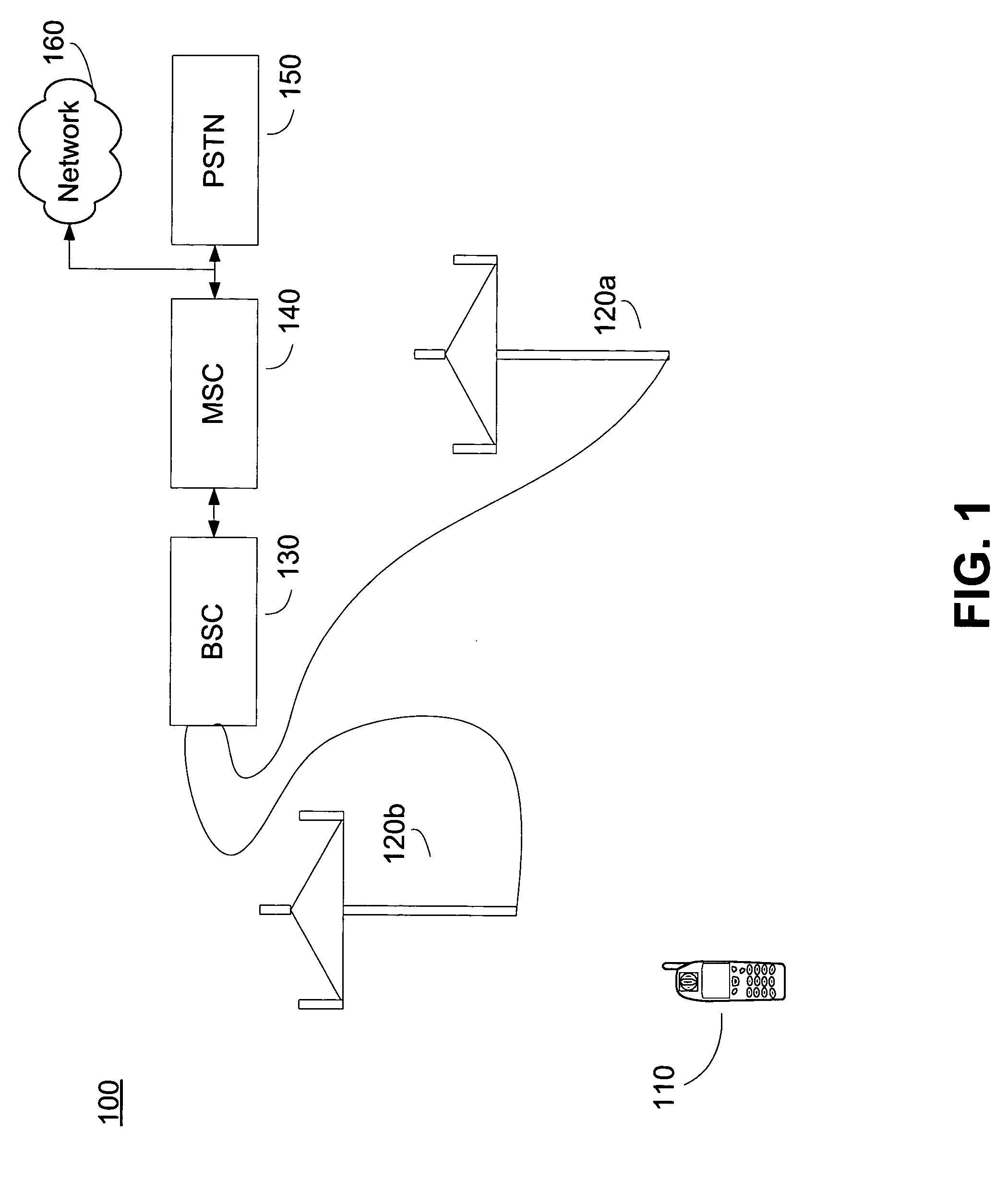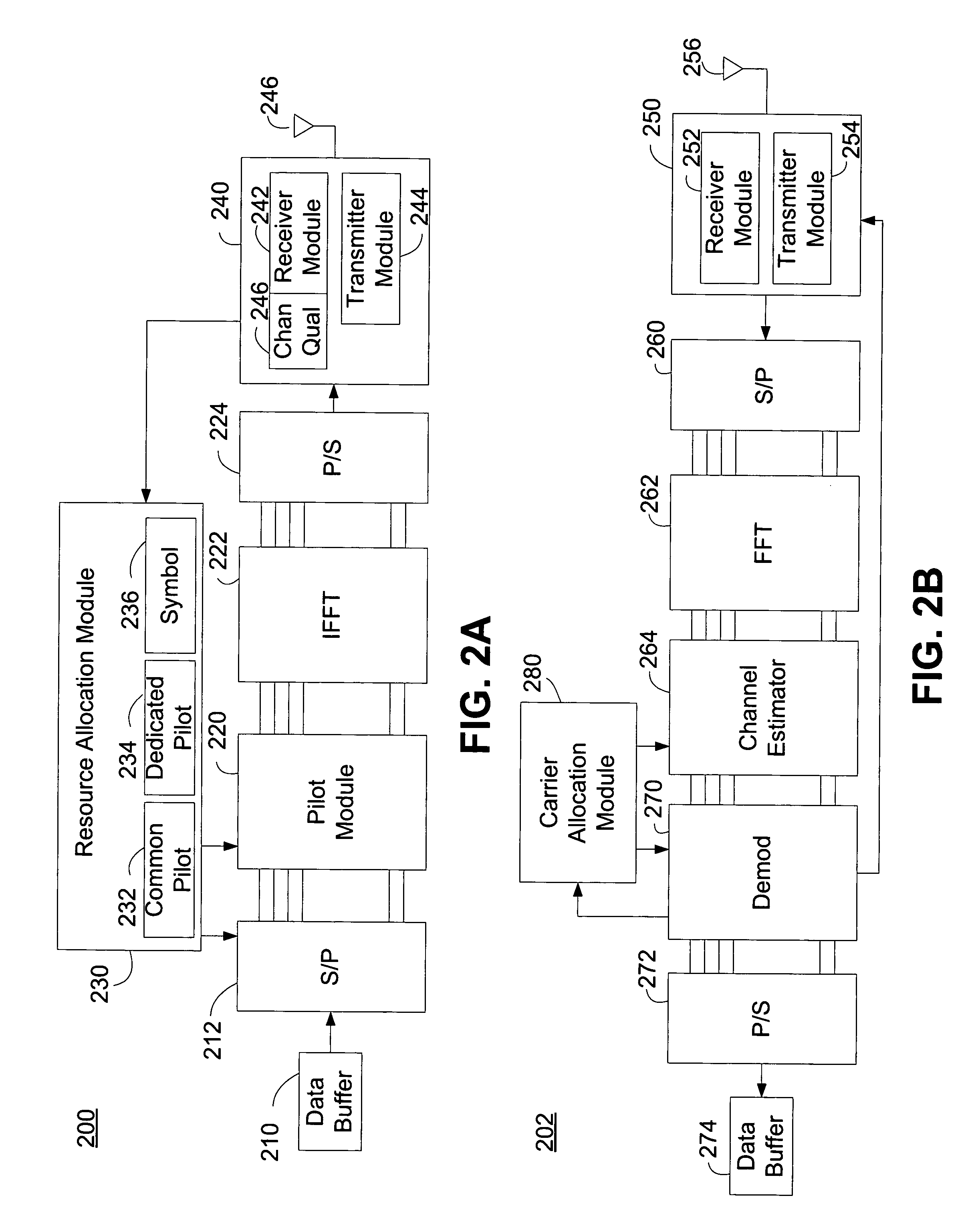Incremental pilot insertion for channnel and interference estimation
a pilot insertion and interference estimation technology, applied in the field of wireless communication, can solve the problem that the receiver in communication with the system is unable to demodulate received data, and achieve the effect of improving the ability of the receiver
- Summary
- Abstract
- Description
- Claims
- Application Information
AI Technical Summary
Benefits of technology
Problems solved by technology
Method used
Image
Examples
Embodiment Construction
[0023] A wireless communication system, such as an OFDMA communication system, can allocate a baseline level of resources for receiver channel and interference estimation. The baseline level of resources can be determined based on a nominal operating parameters for receivers and a corresponding probability of successful data demodulation, given the baseline level of resources and receiver operating parameters.
[0024] However, because of the variable nature of operating conditions and channel characteristics experienced by a portable user terminal in a wireless communication system, there exist conditions where the baseline level of resources will be insufficient for the receiver to accurately estimate channel and interference. The inaccurate channel and interference estimate can result in the inability of the receiver to demodulate data using the estimate. The receiver can indicate or otherwise inform the transmitter of the unsuccessful data demodulation. For example, the receiver c...
PUM
 Login to View More
Login to View More Abstract
Description
Claims
Application Information
 Login to View More
Login to View More - R&D
- Intellectual Property
- Life Sciences
- Materials
- Tech Scout
- Unparalleled Data Quality
- Higher Quality Content
- 60% Fewer Hallucinations
Browse by: Latest US Patents, China's latest patents, Technical Efficacy Thesaurus, Application Domain, Technology Topic, Popular Technical Reports.
© 2025 PatSnap. All rights reserved.Legal|Privacy policy|Modern Slavery Act Transparency Statement|Sitemap|About US| Contact US: help@patsnap.com



